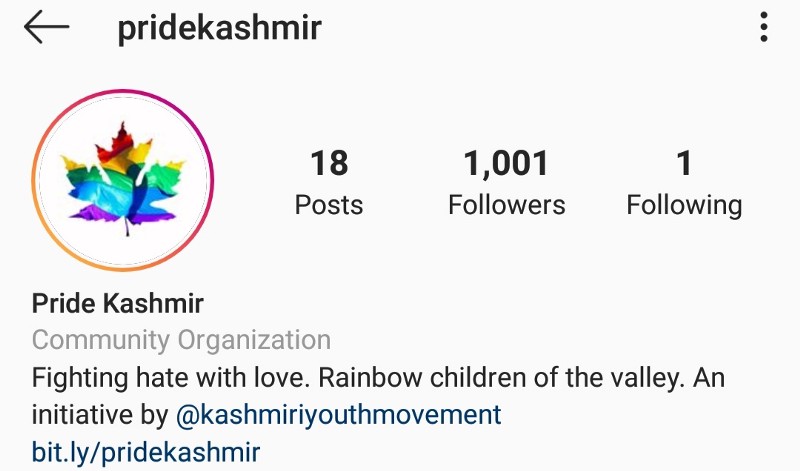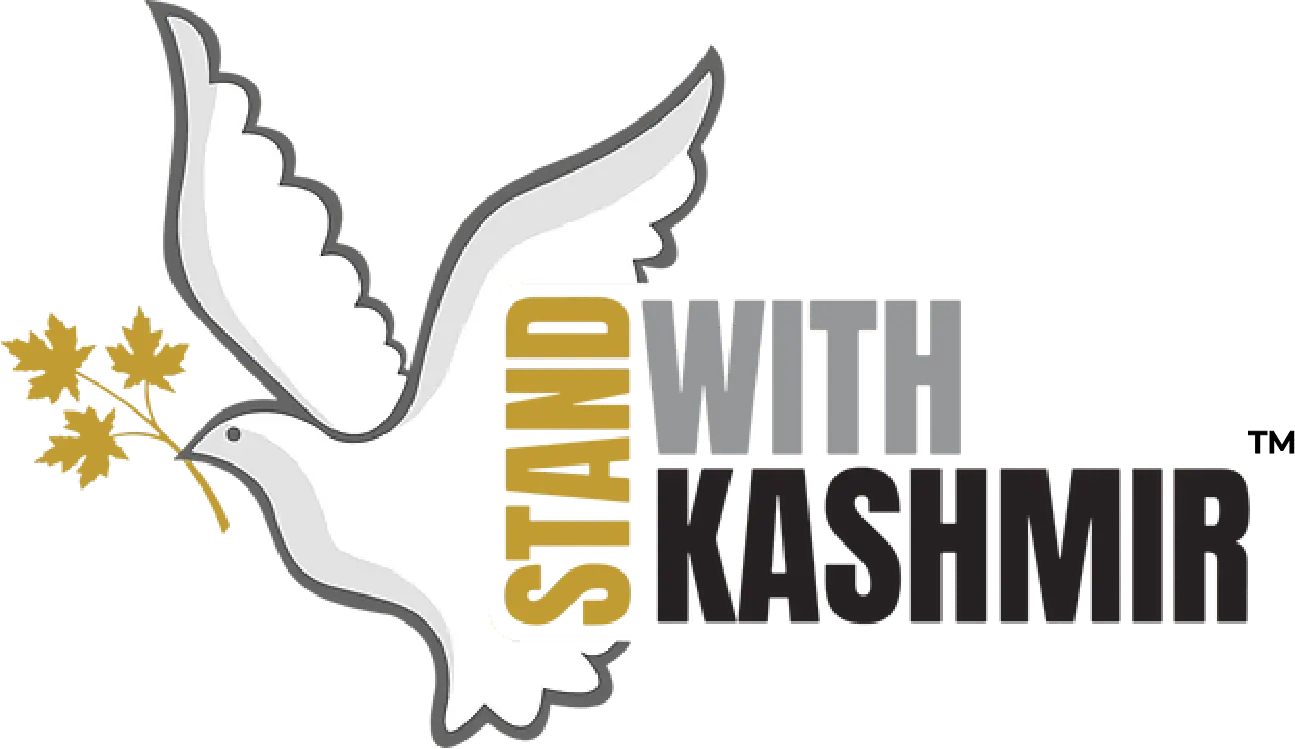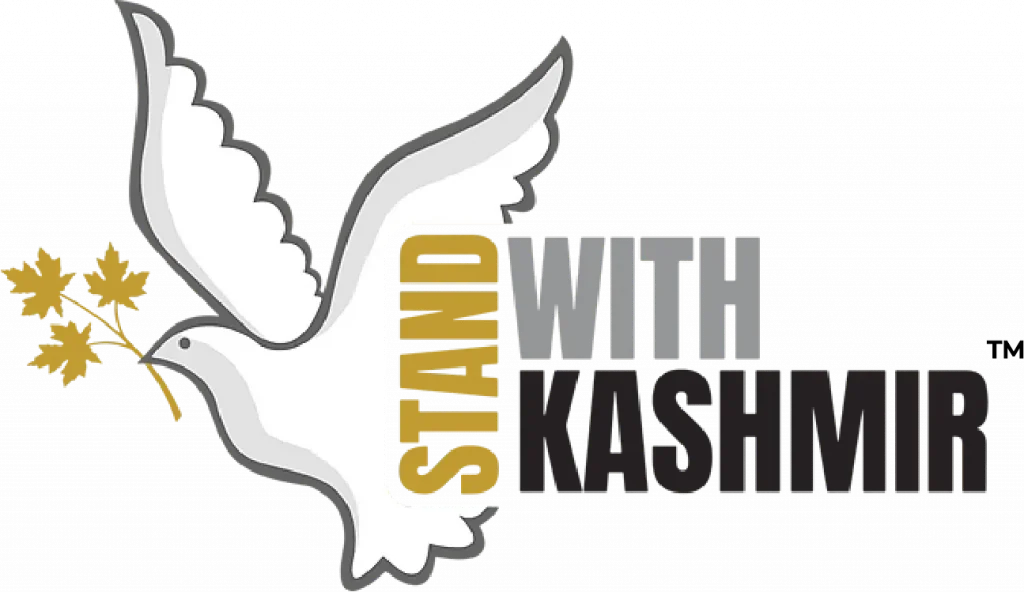Pinkwashing and ‘Pride Kashmir’
July 7, 2020.
In this piece, an author who identifies as a queer Kashmiri Pandit reflects on the use of pinkwashing through the guise of calls for queer liberation, and the importance of opposing the occupation in any struggle for liberation.

In June 2020, the Kashmiri Youth Movement and Pride Kashmir (LGBTQ groups dominated by Kashmiri Pandits opposed to Kashmiris’ call for self-determination), called for a pride parade in Srinagar. These groups actively participate in the ‘pinkwashing’ of India’s occupation; justifying settler-colonial strategies, such as the revocation of Article 370, and erasing the brutal ways in which the freedoms and basic human rights of all LGBTQ Kashmiris have been compromised by the Indian government. As we’ve highlighted elsewhere, pinkwashing is one of the many strategies that settler-colonial regimes use to paint themselves as more “progressive,” than the colonized.
This past month, as the world commemorated the anniversary of the 1969 Stonewall Uprising, the call for queer and transgender people’s collective liberation has never been louder. An essential part of that collective liberation includes calling for an end to state violence and occupation that not only compounds the discrimination faced by the LGBTQ community, but disproportionately impacts them.
At the beginning of June 2020, an instagram account called “Pride Kashmir’’ gained widespread attention, as the pages advertised themselves as “pro-LGBTQ” and called for a pride parade from Lal Chowk in Srinagar. Multiple sources have indicated that Pride Kashmir is an initiative of the Kashmiri Youth Movement, that vilifies Kashmiri aspirations for freedom or Azadi, while pinkwashing Indian state violence and occupation.
Pinkwashing is an LGBTQ term that mirrors the term white-washing; it is the practice of portraying a political entity as gay-friendly in order to downplay it’s harmful practices. Pinkwashing tactics are often used to avoid criticism of settler-colonial and imperialist tactics and nations use pinkwashing to paint themselves as heroes who liberate “backwards” nations or groups of people. While examples of pinkwashing by the U.S., Europe, and Israel abound, it is important to recognize India’s role as well. The Sonzal Welfare Trust, a long-standing Kashmiri non-profit organization that works for the wellbeing of gender and sexual minorities in Kashmir by providing access to mental and sexual health education/support and advocating for LGBTQ friendly policies, issued a statement denouncing Pride Kashmir.

Pinkwashing tactics used by pro-India social media pages push the Islamophobic narrative of Muslims as “barbaric misogynists” and Hindus as “peace loving and tolerant.” They ignore the fact that the Indian government has repeatedly endorsed homophobia and transphobia. Some instances if this homophobia and transphobia include the regressive Transgender Bill that was vehemently opposed by the transgender community, the government’s opposition to surrogacy for same-sex couples, and the proposed opening of centres to “cure” homosexuality. Despite this reality, India seeks to frame itself as the liberator of women and sexual and gender minorities in Kashmir on the one hand, while brutally subjugating those same communities through state violence and occupation on the other hand.
India’s long history of internet shutdowns and communication blockades in Kashmir- the longest and most recent following the August 5th revocation of Article 370- disproportionately harms the LGBTQ+ community by preventing essential communication networks between queer/trans communities in need. There is also the obvious reality that Kashmiri’s LGBTQ community is not spared from the effects of a decades long occupation that has resulted in documented human rights violations including extrajudicial killings, enforced disappearances, and prolonged detention. Using pinkwashing tactics, India ensures that any violent action they take against Kashmiris can be excused because they have deemed themselves the “progressive liberators” of Kashmir. Even while propagating the myth of their LGBTQ saviorism abroad and to international audiences at U.S. Congressional hearings, they continue to fan the flames of queerphobia and transphobia to court the favor of the right wing.

The Kashmiri Youth Movement in particular claims to be a student group that is “non-political” yet repeatedly denounces Kashmiris’ right to self-determination, denies the events of the Kunan Poshpora, and vocally supports right-wing Hindu nationalism. Both of these pages have been founded by Kashmiri Pandits, some of whom identify as LGBTQ. The participation of LGBTQ people or causes in right-wing nationalist projects, or “homonationalism,” is not a new phenomenon. Both pages justify India’s occupation of Kashmir by portraying Kashmiri Muslims as “evil and regressive” and arguing that if the Indian state “clears’’ Kashmir of “Islamic separatists,” LGBTQ Kashmiris will be “allowed” to embrace their identity. The pages also justify India’s revocation of Article 370, widely condemned worldwide, by claiming that it was a necessary measure to extend the Indian Supreme Court’s long overdue rulings on Article 377 of the Indian Penal Code that had criminalized same-sex sexual activity. This myth, actively peddled by the Indian government, has been thoroughly debunked.
Pride Kashmir’s pinkwashing erases the variety of voices it claims to represent and intentionally removes LGBTQ Kashmiri Muslims’ narratives and agency. Almost all of the members of the Pride Kashmir and Kashmiri Youth Movement social media pages identify as Kashmiri Pandit. Both social media pages state that they speak for all Kashmiris, yet they cannot speak of the experience of being a Kashmiri Muslim identifying as LGBTQ as it intersects with living under military occupation and enduring state violence. As someone who identifies as a queer Kashmiri Pandit born and raised in the diaspora, I acknowledge that I have never lived under occupation or endured systemic Islamophobia, and that my experience differs greatly from those living in Kashmir. I will not be surveilled, detained or harassed by the Indian military like my Kashmiri Muslim peers in Kashmir. As I stand for the liberation of the entire Kashmiri LGBTQ community- Muslim, Hindu, Sikh, Buddhist, Christian, atheist, and nonreligious- I recognize that our experiences are not universal nor are our histories identical. It is undebatable, though, that queer liberation in Kashmir and beyond is incomplete without ending occupation and granting the right of self-determination.
I want to call on my fellow Kashmiri Pandits of all sexual orientations and gender identities to recognize how they are being called into this pinkwashing project and to reject it. Any attempts towards queer liberation in Kashmir that do not address Indian occupation do not reflect the aspirations of the wider LGBTQ community in Kashmir.
Read more: INDIA’S 10 STEPS TO SETTLER COLONIALISM IN KASHMIR
References
Shreya Ila Anasuya. “Why the Transgender Community is Angry Over a Bill Meant to Protect Their Rights.” The Wire. 19 December 2018. https://thewire.in/lgbtqia/why-the-transgender-community-is-angry-over-a-bill-meant-to-protect-their-rights
Mirza Saaib Beg. “Pinkwashing Kashmir.” TRT World. 24 October 2019.https://www.trtworld.com/opinion/pinkwashing-kashmir-30804
Mona Bhan and Deepti Misri. “Kashmiri Pandits Must Reimagine the Idea of Return to Kashmir.” Al Jazeera. 10 August 2019. https://www.aljazeera.com/indepth/opinion/kashmiri-pandits-imagine-idea-return-kashmir-190810183932740.html
Aijaz Ahmad Bund. Hijras of Kashmir: A Marginalized Form of Personhood. Srinagar: JayKay Books, 2018.
Aijaz Ahmad Bund and Shreshtha Das.“The Homonationalist Agenda of ‘Good’ Queers Who Love the Nation-State.” The Wire. 13 February 2020. https://thewire.in/lgbtqia/homonationalism-india-sedition
“Feminism 101: What is Pinkwashing?” Fem Magazine. 2 March 2019. https://femmagazine.com/feminism-101-what-is-pinkwashing/
Anish Gawande. “The False Link Between Article 370 and Queer Rights.” The Wire. 6 September 2019. https://thewire.in/lgbtqia/all-you-need-to-know-about-the-false-link-between-article-370-and-queer-rights
Maya Mikdashi, “Gay Rights as Human Rights: Pinkwashing Homonationalism.” Jadaliyya. 16 December 2011. https://www.jadaliyya.com/Details/24855/Gay-Rights-as-Human-Rights-Pinkwashing-Homonationalism
Deepti Misri. “Showing humanity: Visuality and Violence in Kashmir.” Cultural Studies 33 no. 3 (2019): 527–549. https://www.tandfonline.com/doi/abs/10.1080/09502386.2019.1585465?journalCode=rcus20
Sindhuja Parthasarathy, “The Invisible Gender: Menzimyeors of Srinagar.” Sahapedia. 30 November 2018. https://www.sahapedia.org/the-invisible-gender-menzimyeors-of-srinagar
“Pride, Prejudice, and Pinkwashing in Kashmir.” Logically. 26 June 2020. https://www.logically.in/blog/pride-prejudice-and-pink-washing-in-kashmir/ https://www.logically.co.uk/blog/pride-prejudice-and-pink-washing-tracking-pridekashmir
Jasbir Puar. Terrorist Assemblages: Homonationalism In Queer Times. Durham: Duke University Press, 2007.
Sarah Schulman, “‘Pinkwashing’ and Israel.” The New York Times. 22 Nvember 2011. https://www.nytimes.com/2011/11/23/opinion/pinkwashing-and-israels-use-of-gays-as-a-messaging-tool.html?_r=0
Stay in touch with Stand with Kashmir.
Stand With Kashmir (SWK) is a Kashmiri-driven independent, transnational, grassroots movement committed to standing in solidarity with the people of Indian occupied Kashmir in ending the Indian occupation of their homeland and supporting the right to self-determination of the pre-partition state of Jammu and Kashmir. We want to hear from you. If you have general inquiries, suggestions, or concerns, please email us at info@standwithkashmir.org.
©2023 Stand With Kashmir All rights reserved. SWK is a 501(c)(3) non-for-profit organization.


Leave a Reply